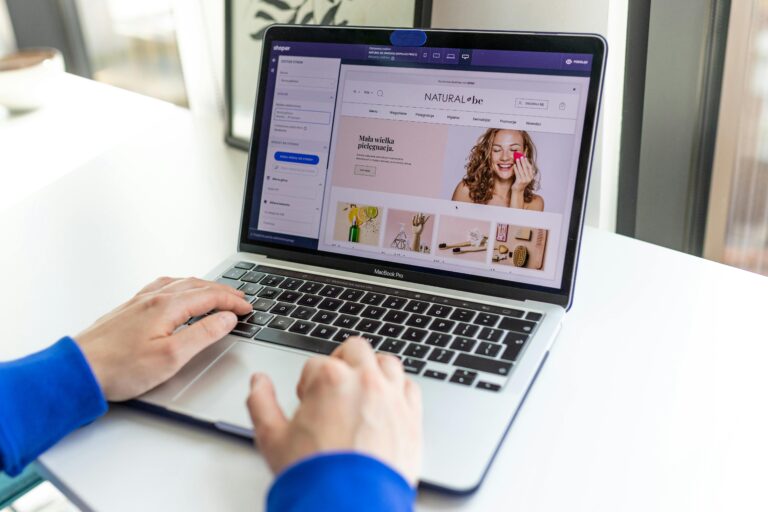Getting Leads For Your Business: A Practical Guide That Actually Works

I hope you enjoy this blog post. If you want Hello Bar to grow your leads, click here.
Author:
Mansi
Published
April 25, 2025

Table of Contents
Leads are the lifeblood of any business. Without leads, there are no sales. No growth. Just a whole lot of frustration.
But here’s the thing—most companies either overcomplicate getting leads, or they do sporadic stuff without a system. Perhaps you’ve done some ads here, emails there, and social media when you remembered. But the leads didn’t roll in reliably. Ring a bell?
Let’s get that fixed. In this guide, I’m going to guide you through what actually works—step by step. No hype, no jargon. Just good, useful advice from someone who’s spent years doing this for big companies and small.
What Is a Lead, Really?
Let’s get this straight first. A “lead” is not necessarily someone who liked your Instagram post. A lead is an individual or company who has genuinely expressed interest in what you have to sell. They’ve done something—filled in a form, clicked a link, requested a quote, or called your business. There are several kinds of leads:
- Cold leads: They don’t know you yet.
- Warm leads: They know you and are considering you.
- Hot leads: They’re ready to talk or buy.
It’s not how you acquire and treat them that counts.
Also something to consider: 74% of businesses indicate making leads convert into customers as the number one goal. So if you’ve been handling leads casually, it’s time to do things differently. Leads are more than clicks—leads are prospects. And if conversion is a common business priority, having a lead system is non-negotiable.
Step 1: Know Who You’re Talking To
Get clear on who your ideal customer is before you do anything. Not just “anyone who needs what I sell.” Be specific. The more specific you are, the better your marketing will perform.
Ask yourself:
- What type of businesses or individuals benefit most from your service?
- What issues do they have that your product resolves?
- Where do they spend their time online and offline?
- What do they speak when discussing those issues?
This is not a branding exercise—it’s saving time and money. If you attempt to market to everyone, you’ll end up reaching nobody.
Here’s something to consider: Just 1 in 10 marketers report that their lead generation programs are extremely effective. That’s not a lack of effort—it’s a lack of clarity. Most campaigns fail because they’re not targeting the right person with the right message.
Step 2: Build a Lead Magnet That’s Actually Useful
Humans don’t surrender their phone number or email address for nothing. You must offer them something of value in return. That’s your lead magnet.
Your lead magnet doesn’t have to be elaborate. It just needs to fix a little but genuine issue your dream customer is facing.
Examples:
- A short checklist
- A pricing guide
- A free tool or calculator
- A downloadable sample
- A free trial or consultation
- A “how to” guide
Keep it fast to eat, targeted, and directly related to your top offer. If you’re selling accounting software, don’t create a lead magnet on “How to Promote Your Company.” Stay on target.
Step 3: Create a Landing Page That Converts
Don’t send traffic to your homepage. Your homepage is a busy street—too many distractions. Send leads to a landing page designed with one purpose: to get their information.
What is a good landing page?
- A clear, benefit-driven headline (not a slogan)
- Short, direct explanation of what they’ll get
- A form with as few fields as possible (name and email is often enough)
- A strong call to action (“Get the free guide,” “Book your free call”)
- Trust elements—testimonials, logos of past clients, or a short “about you” section
Companies that expand their number of landing pages from 10 to 15 experience a 55% boost in leads. That single statistic alone should make you reconsider how many “entry points” you provide your audience. The more specific your landing pages, the higher your chances of converting.
And for goodness’ sake—make sure it works on mobile. Over half your visitors are probably on their phone.
Step 4: Pick a Traffic Strategy (or Two)
You can’t get leads if nobody is seeing your offer. Here are a few methods of getting traffic. Choose those that fit your time, budget, and where your people hang out.
1. Google Search Ads
These are excellent if individuals are actively searching for what you have. If you’re a local consultant, lawyer, or plumber, this is good. You only pay when someone clicks, and they tend to be high-intent.
Tip: Target search terms with buying intent—such as “best commercial roofing company near me” rather than “roofing tips.”
2. Facebook or Instagram Ads
These are suitable for visual products or impulse-pull services—fitness, fashion, home improvement, personal care. You can aim at highly specific audiences, but keep this in mind: these users are not actively searching. Your ad must grab their attention and lead them to something helpful (such as that lead magnet we mentioned).
3. SEO and Content Marketing
This is time-consuming but rewarding in the long run. You produce helpful blog content, videos, or tutorials that respond to legitimate questions people are looking for. Through time, you begin appearing on Google and trust is established.
As an example, if you’re a home renovation business, a blog entry entitled “Cost of Kitchen Remodel in [City]” can generate serious traffic in the long run.
4. Email Outreach
This is most effective for B2B. Identify applicable contacts (not random individuals), fire off a quick email with a concise offer or value addition, and request a call for further discussion.
Make it simple. Nobody wishes to read lengthy paragraphs or corny pitches.
5. LinkedIn (For B2B)
Create an actual profile. Post useful content. Engage with others’ posts. Send brief, personalized connection invitations. Don’t pitch first—establish familiarity. Then, after the timing’s good, provide something small that benefits them.
This takes work, but it works particularly well for high-ticket offerings.
6. Partnerships and Referrals
One of the simplest methods to acquire high-quality leads is by leveraging another person’s audience. Consider:
- Partnering with a non-competing business in your space
- Offering referral bonuses
- Getting listed in curated directories or industry platforms
Leads from referrals close faster and stick around longer.
Step 5: Set Up a Follow-Up System
Most leads won’t convert immediately. Some will forget. Others are busy. Many are just not ready yet. That’s okay.
The follow-up system is where the money is.
Here’s how to do it without being pushy:
- Email sequence: After someone provides their details, send some helpful emails. Educate, respond to frequently asked questions, demonstrate success stories, and provide assistance—not a sales pitch.
- Call or text (if applicable): For valuable leads, a nice follow-up call or text can be a miracle. Just be respectful and never stalk.
- Retargeting ads: If someone checks out your site but doesn’t convert, display them simple reminder ads later via Facebook or Google.If someone visits your site but doesn’t convert, show them simple reminder ads later through Facebook or Google.
Leads that come back often convert better than those who click once.
Step 6: Track What’s Working (and What’s Not)
Acquiring leads is not an art of guessing. You must find out what actually works. That’s where monitoring comes into the picture.
You don’t have to set up something complicated like big analytics. At least, monitor:
- Where your leads are coming from (ads, blog, referrals, etc.)
- What percentage of visitors convert into leads (conversion rate)
- How much each lead costs you (cost per lead)
This helps you double down on what’s working and cut what’s not.
Use tools like:
- Google Analytics (for website traffic)
- Meta Ads Manager or Google Ads (for tracking your ads)
- Simple spreadsheets or a CRM to track contacts and follow-ups
Step 7: Keep the Pipeline Full
The worst position to be in is needing leads fast. That’s when panic decisions happen. Good lead generation is about building systems so that leads come in steadily—even when you’re busy serving clients.
Here’s the payoff: Companies with a formal lead generation process bring in 133% more revenue than companies without one. This is not luck. It’s about consistency. Companies that succeed in lead generation have a process—not good intentions.
A few habits that help:
- Block time each week to work on lead generation, even when things are going well
- Refresh ads and landing pages every couple of months
- Add new content (blog, video, FAQ) regularly
- Talk to your past clients and ask for referrals or testimonials
- Stay active in the places where your audience hangs out
Leads are not something you “get” once. You create the systems and habits that cause them to keep coming.
Loved what you are reading? Do read our blog on Converting Marketing Leads into Sales Leads: 7 Expert Tips
Common Mistakes to Avoid

Even seasoned businesses make these mistakes:
1. Being vague: “We help you grow” doesn’t mean anything. Get specific about what you do and who it’s for.
2. Overcomplicating your website: If it takes longer than a few seconds to get your offer or find the next step, you’re losing leads.
3. Relying on one channel only: Don’t put all your eggs in one basket. Combine short-term strategies (such as ads) with long-term ones (such as SEO or partnerships).
4. Not following up: Most companies don’t follow up nearly enough. You’re not bothering people by checking in—you’re giving them the opportunity to act when the timing is right.
5. Ignoring the data: If you’re not tracking, you’re guessing. Even basic tracking can prevent you from wasting thousands of dollars on the wrong path.
Bonus Step: Use Popups—But Only at the Right Time
There are two reasons most people immediately associate with “popups”: first, annoyance; second, unwanted interruption. But the reality is, used properly, popups can actually benefit your visitors—not disrupt them.
Timing and relevance are the clues.
You don’t want a popup to strike someone the moment they arrive at your site. That’s like yelling at a customer the moment they step foot in your store. But if someone has been on your page for some time, is scrolling, or seems to be about to exit? That’s a good time to present them with something valuable.
Here’s how to do it and not get pushy:
- Exit-intent popups: They appear when the system senses someone’s going to close the tab or move the mouse out. It’s a final opportunity to present a lead magnet or coupon.
- Scroll-triggered popups: Display these after someone scrolls 60% or further down the page. At that point, they’re definitely interested.
- Time-delay popups: They come after a visitor has spent, for example, 30–45 seconds on a page—long enough to be interested, not irritated.
One of the tools that comes in handy is Hello Bar. It allows you to build clever popups, sticky bars, and sliders without ever having to touch code. You can A/B test variations of messages, dictate exactly when and how to show them up, and link them to your email list or CRM.
To be honest, Hello Bar even says that businesses on their platform see at least 3–5% lead growth just from using exit-intent popups or scroll opt-ins.
Just remember:
- Keep it short (one line and a button is often enough)
- Make the offer crystal clear
- Don’t overdo it—one popup per session is plenty
Used well, popups don’t damage user experience. They enhance it by providing assistance at the time it’s needed.
Conclusion
Getting leads isn’t about doing every trick in the book. It’s about knowing your customer, providing genuine value, and appearing where they are—repeatedly. With that foundation, leads won’t be a mystery anymore. They’ll be a system you can rely on.

